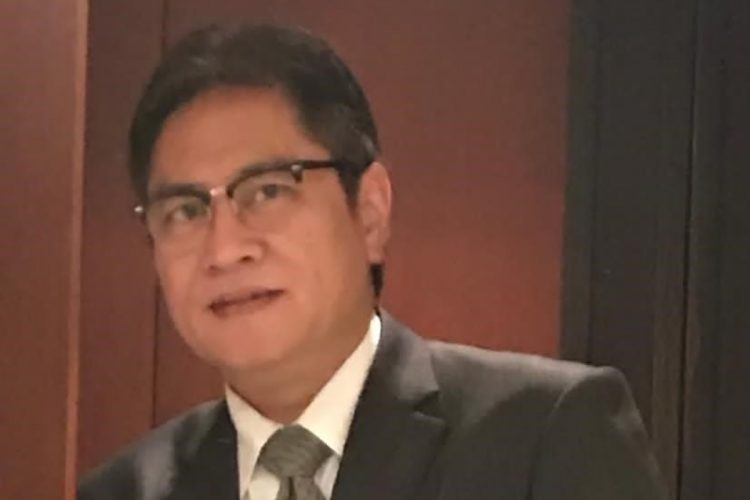06/24/2021
Former head of regional economic partnership negotiations looks back on negotiation process

Fifteen countries signed the Regional Comprehensive Economic Partnership (RCEP) Agreement in November 2020. One may easily imagine that there were numerous difficult situations during the eight years of negotiations. In this interview, Iman Panbagyo, former chairman of the RCEP Trade Negotiation Committee and the now retired director-general for International Trade Negotiations at the Indonesian Ministry of Trade, reflects on the ordeals that had to be overcome during the process, such as the difficulties surrounding the negotiation process, and the future of the trade pact.
I still recall that, in January 2011, then-Minister of Trade Mari Pangestu and I had a four-hour discussion over breakfast on possible deliverables for the Association of Southeast Asian Nations (ASEAN) chairmanship by Indonesia that year.
On that occasion, we came up with the idea of consolidating the existing ASEAN+1 free trade agreements to create a regional FTA that focuses on ASEAN as the hub. This eventually evolved into a concept called the “ASEAN Framework for Regional Comprehensive Economic Partnership,” which later became the foundation for the future RCEP.
Back then, there were two initiatives on the table. One was the ASEAN+6 EPA (CEPEA) proposed by Japan, and the other was the ASEAN+3 FTA (EAFTA) initiated by China. The discussions I mentioned above led to our view that ASEAN should not be put in the position of having to choose whether to go with CEPEA or EAFTA. ASEAN should exert leadership, based on the principle of ASEAN centrality, and work toward the creation of a new FTA that was neither CEPEA nor EAFTA.
This idea was partly motivated by the concept known as the Free Trade Area of the Asia-Pacific (FTAAP), which was being discussed under the Asia-Pacific Economic Cooperation, commonly known as APEC, around the same time. We also believed that we should consolidate various trade agreements in the region with an eye toward the future, especially in light of the so-called spaghetti bowl phenomenon of FTAs (a situation of economic inefficiency), which was becoming increasingly apparent especially in Asia. Of course, I thought that this process would only take five to six years at most, and never imagined that the negotiations would last longer than that.
After all, it did take eight years, but I am relieved that the negotiations have been successfully concluded. The conclusion and signing were a deeply moving moment for me, especially when I recall that during those years I sometimes felt that I had no one to talk to and spent hours in the conference room trying to come up with solutions on my own. It was like living on a planet by yourself, consulting yourself and convincing yourself that a solution is still possible.
Working relations with Japan
Of course, I was very much helped by Japan during the negotiations. Japan played an important role in ensuring a quality agreement in terms of trade rules. As the negotiations involved 16 countries with quite different and diversified backgrounds, there was perhaps a tendency for discussions to head toward diluting the quality. However, thanks to Japan’s strong position on this matter, we were able to achieve an agreement with a reasonable level of ambition. Furthermore, I highly appreciate the fact that Japan was the first ASEAN FTA partner to host the RCEP ministerial meeting in July 2018, under then-Minister of Economy Trade and Industry Hiroshige Seko. This was a significant moment that highlighted Japan’s strong commitment to the RCEP negotiations.
As the negotiations lasted for eight years, there were many unforgettable moments. The first critical moment, as I recall, was the ASEAN Economic Ministers’ Meeting in August 2012 at Siem Reap, Cambodia. At that time, the ministers and their counterparts from six ASEAN FTA partners tried to agree on the guiding principles of the negotiations, but participating countries had different views on the scope and coverage of the negotiations. In the end, the ministers from the 15 countries and I held an intensive, frank discussion in a separate tiny room just by ourselves. This was the moment when I felt this would definitely be a very challenging trade negotiation.
Another critical moment was when India expressed significant concerns about the RCEP and implied it would leave the negotiations. I have to admit that I could not sleep for two days in a row. I feared that India’s decision would create a domino effect and cause some of the other participating countries to also leave the table.
We tried to provide flexibility to India in many areas, but India ended up leaving and did not return. I was very much worried then that other countries were not entirely happy with the results up to that point and would start demanding a re-opening of the agreed outcomes or would exit the RCEP, possibly resulting in a collapse of the negotiations.
ASEAN is also facing difficulties with India. Without any doubt, India is an important economic and strategic partner in greater Asia. From this perspective, I believe Japan’s efforts to engage India in the region, for instance through cooperation on enhancing industrial competitiveness, are highly welcomed. However, it seems that New Delhi’s stance toward liberalization of trade and investment is not confined to the RCEP and the ASEAN-India FTA. The current situation may be challenging, but I do hope that India will return to the trade bloc in the future, and I believe there is a good chance this will happen.
Effect from TPP
For many years, the RCEP negotiations were convened in parallel with talks that led to the Trans-Pacific Partnership (TPP) deal. There is no denying that the RCEP negotiations were in some way or another affected by that process. In the early 2010s, countries that were not in the talks had a motivation to move toward regional economic integration by other means. For instance, from a geopolitical standpoint, Indonesia understood the importance of regional economic integration by a large number of countries.
In this regard, the TPP, and later, the Comprehensive and Progressive Agreement for Trans-Pacific Partnership (CPTPP), generated momentum and resulted in the acceleration of the RCEP negotiations. However, the membership of the RCEP was much more diverse than the TPP/CPTPP, so I needed to be careful not to automatically bring in all the rules and disciplines from those deals.
Looking ahead
In regards to the future, I hope the RCEP will become a platform for fostering economic integration among 16 countries in greater Asia. From this viewpoint, I do hope India returns to the RCEP as early as possible. If the RCEP can be developed as a regional platform, it will have positive effects on the regional and global economies. This trade bloc will play a significant role not only in the short term in restoring supply chains affected by COVID-19, but also in the medium-to-long-term as a reference point and building block toward an eventual FTAAP.

The “two giants,” namely the CPTPP and the RCEP, developing in tandem would vitalize trade and investment flows. This would then lead to the strengthening of the multilateral trading system embodied by the World Trade Organization, and would positively stimulate global economic growth. The difficult situation we face now under COVID-19 provides all the more reason why the RCEP members should aim high.


